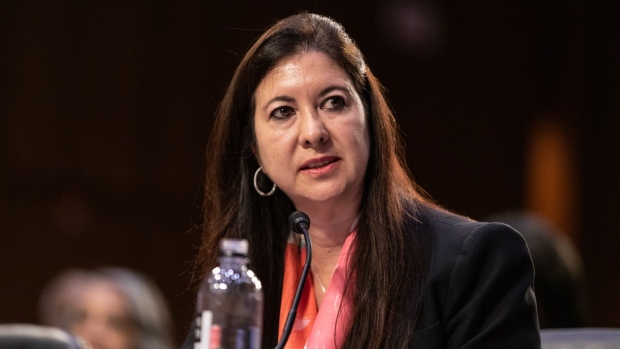Feb 7, 2024
Fed Officials Signal Wariness to Cut Rates Too Soon, Despite Inflation Progress
, Bloomberg News

(Bloomberg) -- Four Fed officials suggested Wednesday they don’t see an urgent case for lowering interest rates, adding to a roster of policymakers in recent days who made clear a cut isn’t likely until May at the earliest.
Governor Adriana Kugler, Boston Fed President Susan Collins, Minneapolis Fed chief Neel Kashkari and Richmond’s Thomas Barkin were all noncommittal on when the US central bank can start reducing the Fed’s benchmark lending rate from a two-decade high, despite a marked improvement in inflation last year.
The remarks largely echo the message delivered over the past week by Fed Chair Jerome Powell, who emphasized that the US central bank isn’t ready to begin rate cuts until policymakers are sure inflation is headed toward the Fed’s 2% target, making a cut at the March 19-20 meeting unlikely.
Investors have pared bets on a March rate reduction and are setting their sights on the Fed’s subsequent decision on May 1, but still see a slim possibility of an earlier move.
Kugler, in her first public remarks since joining the Fed in September, said she’s optimistic that inflation progress will continue, but stopped short of offering a timeline for when officials may be able to reduce borrowing costs.
“At some point, the continued cooling of inflation and labor markets may make it appropriate to reduce the target range for the federal funds rate,” Kugler said at the Brookings Institution in Washington, adding that she’ll be watching economic data closely to verify that inflation is continuing to decline.
Read More: Fed’s Kugler Says Rate Cuts May Be Appropriate ‘At Some Point’
Collins, who doesn’t vote on monetary policy this year, said she’s looking for more evidence that inflation is on track toward 2% before moving to cut interest rates, though that step is likely “later this year.”
“Seeing sustained, broadening signs of progress should provide the necessary confidence I would need to begin a methodical adjustment to our policy stance,” Collins said at the Boston Economic Club. She added it will be appropriate to begin easing policy before the end of the year.
In an interview on CNBC Wednesday morning, Kashkari — also a nonvoter this year — said officials would like to see “a few more months” of inflation data before cutting interest rates, adding that he thinks two to three cuts will likely be appropriate for 2024.
“We’re not looking for better inflation data, we’re just looking for additional inflation data that is also at around this 2% level,” the Minneapolis chief said. “If we get to see a few more months of that data, I think that will give us a lot of confidence.”
The Fed’s policy-setting committee voted unanimously on Jan. 31 to leave the federal funds target rate unchanged in a range of 5.25% to 5.5%. Officials have held rates at what they describe as a restrictive level since July 2023. Even so, the economy grew at a 3.3% annualized rate in the fourth quarter, while adding 353,000 jobs in January — both well above forecasts.
The surprising resilience has left some policymakers wary that cutting rates too early could reaccelerate demand and leave inflation stuck above their 2% target. Their preferred price measure rose 2.6% in 2023, down from a 7.1% high in mid-2022.
“I am very supportive of being patient to get to where we need to get,” Barkin said Wednesday at an Economic Club of Washington, D.C. event. “I see, at this point, the tradeoff — which is coming into better balance — as still being in favor of continuing to work on inflation.”
--With assistance from Reade Pickert and Steve Matthews.
(Updates with Barkin comment in 13th paragraph.)
©2024 Bloomberg L.P.






